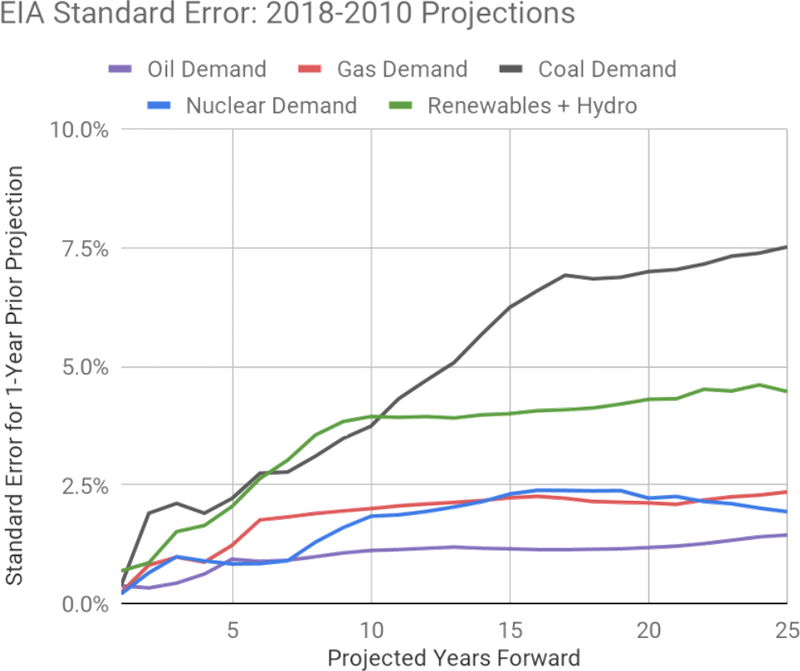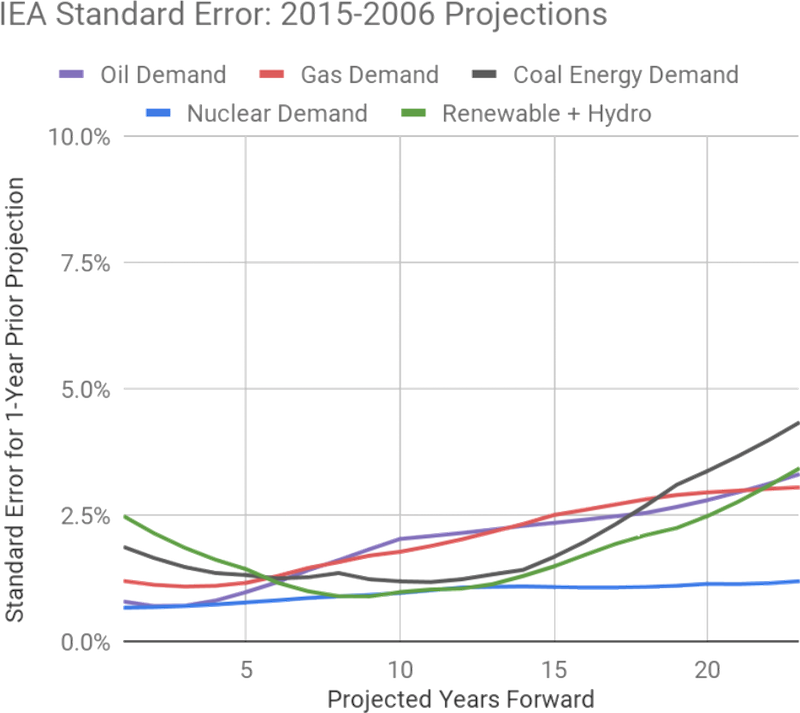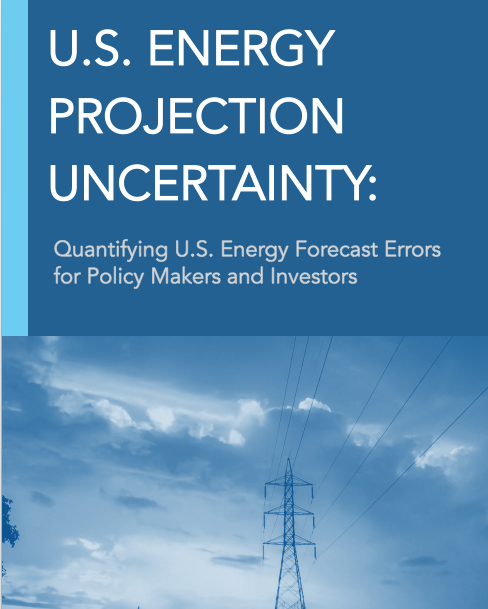
Energy outlooks for the United States are commonly used to inform policy decisions and investment strategies, but the errors associated with these forecasts are rarely quantified. This report analyzes the Energy Information Administration’s (EIA) and the International Energy Agency’s (IEA) consumption projections, with results showing coal was over predicted and gas and renewable energy were under predicted.
Key Findings.
Outlook Errors to Actual Results
There were drastic changes in 2016 compared to the predictions five years prior in 2011. Total energy consumption was over predicted by 5% and gas was unpredicted by 10%-16%. Coal and renewable energy consumption had the highest amount of errors in predictions, with change above 30% in 5 years. The outlooks compared are the Reference Scenario of the Energy Information Administration (EIA) and the New Policies Scenario from the International Energy Agency (IEA).
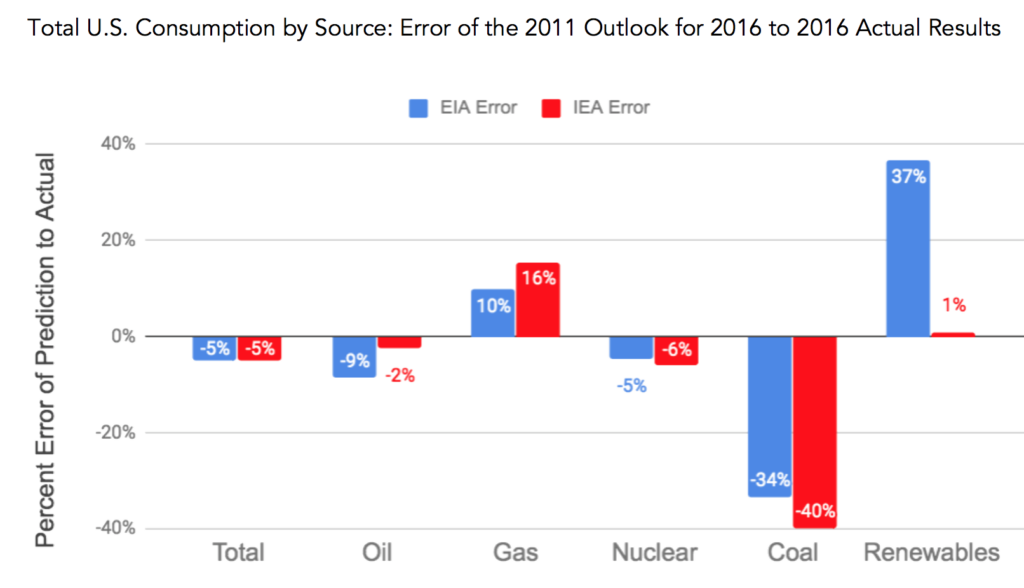
Outlook Changes Over Time
To highlight the energy types that experienced the greatest changes, the EIA’s reference outlooks for Coal in the Annual Energy Outlook (AEO) and IEA’s New Policies outlook for renewables in the World Energy Outlook (WEO) are displayed below. These outlooks saw large changes over relatively short periods of time. Coal predictions were steadily decreased, while renewables were increased.
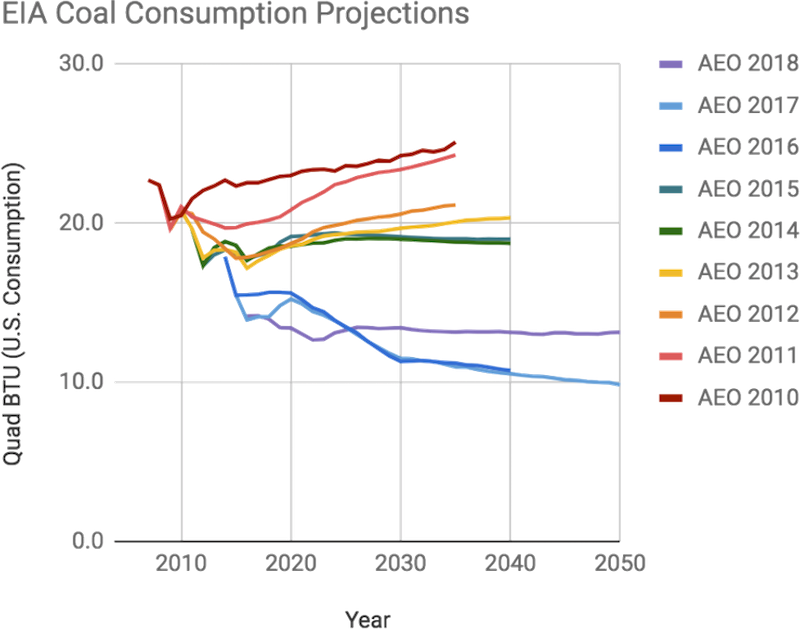
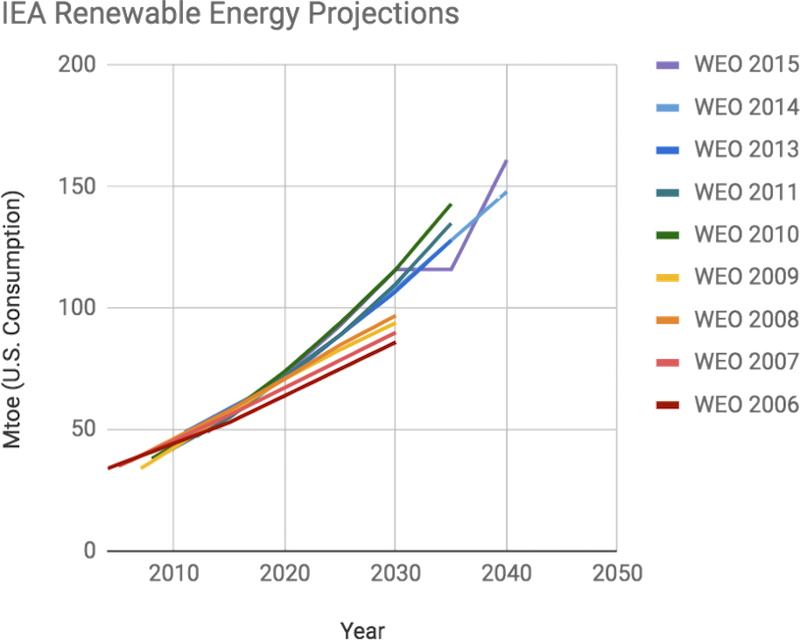
Standard Error per Year of Outlook
To measure the volatility associated with each new reporting year, the standard error is presented for different energy types and projected time forward. The standard error is equivalent to the standard deviation, meaning that 68.2% of year-to-year reporting changes fall below a given percent change. Results shows that Coal and Renewables are the most volatile. Additionally, all energy projections tend to get more volatile further into the future, meaning the future has greater exposure to changes. These results also shows that the International Energy Agency (IEA) has less volatility in long-term predictions of Coal, Renewables and Nuclear.
